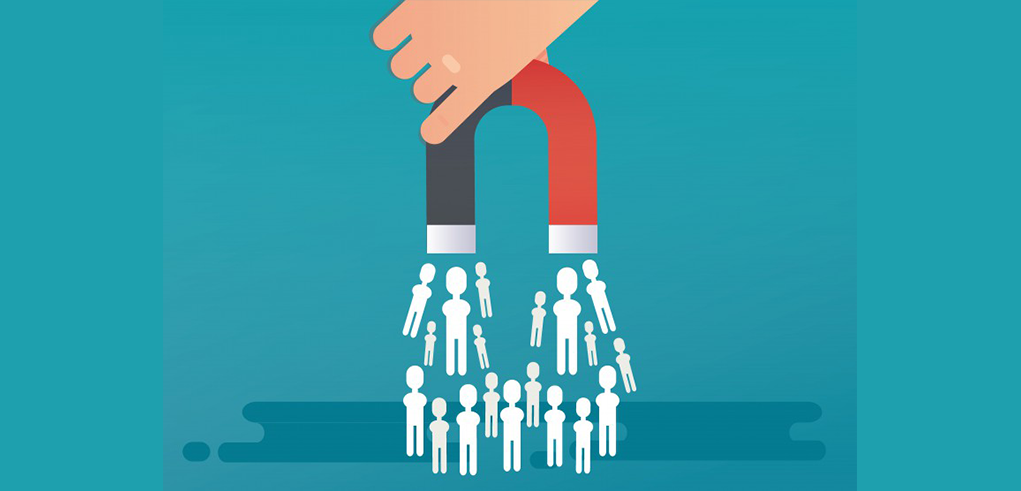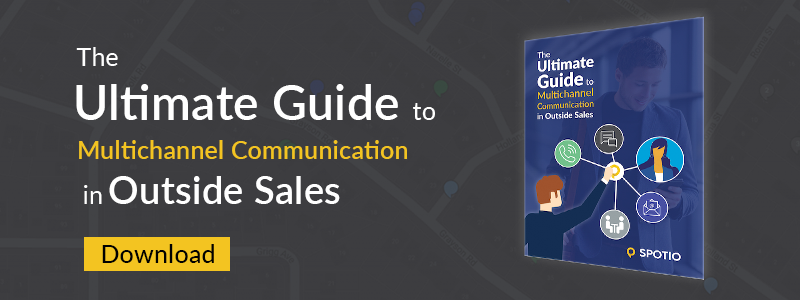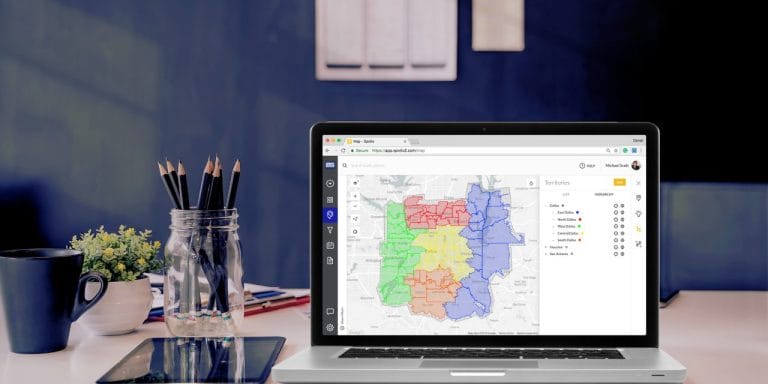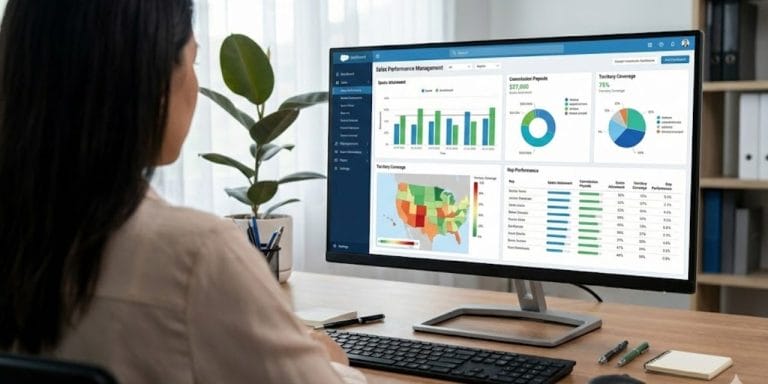What does engaging your prospects look like for field sales reps? And how do you develop a system of engagement that works for your target audience?
In this article, we’ll discuss why sales engagement is beneficial, how to create an outreach strategy that truly engages your leads, and more.
Let’s get to it!
What is Sales Engagement?
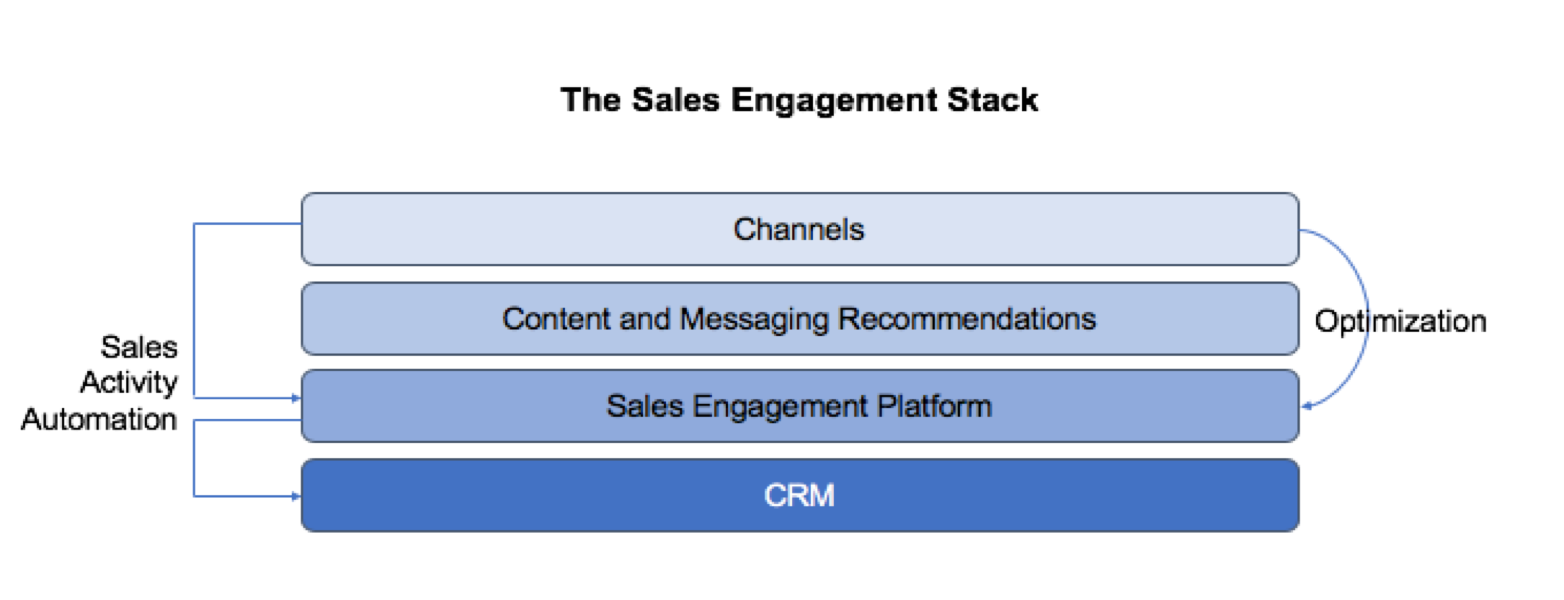
Sales engagement is any and all interactions that take place between a prospect and sales rep. It can be measured in time spent interacting and the number of touchpoints interacted with.
For instance, the amount of time a prospect spends watching your product demo video on YouTube is a measurement of sales engagement, as is the number of email CTAs they click.
To increase engagement, many sellers turn to sales engagement software. This kind of tool helps centralize interactions across multiple communications channels (email, phone calls, texts, in-person meetings, etc.) and automate the selling process.
Imagine how much more effective you’ll be when important sales tasks like sending outreach campaigns and follow-up messages are handled for you, allowing you to focus all of your energy on building relationships with prospects and closing deals!
3 Key Benefits of Sales Engagement
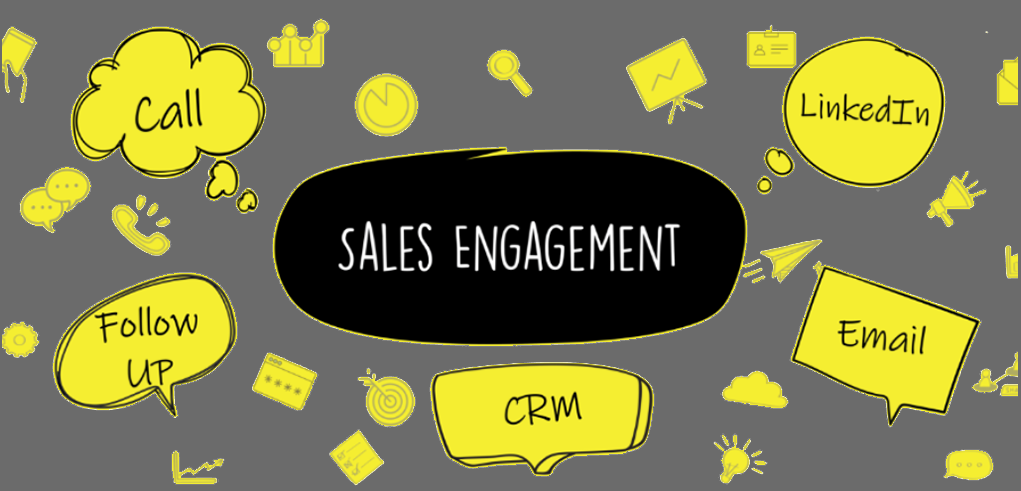
Effective sales engagement requires an investment of time and resources. The question is, will the investment be worth the effort? In almost all circumstances, the answer is “YES!”
Here’s how sales engagement can benefit you as a field sales rep:
Personalization
You know the old saying, “people buy from those they know, like, and trust.” By personalizing your sales efforts via an effective sales engagement process, you’ll be able to build trusting relationships with your target audience.
These relationships will undoubtedly lead to more sales as 80% of consumers are more likely to buy from a company that offers personalized experiences and 44% say they’re more likely to make repeat purchases after going through a personalized experience.
Productivity
Personalization in sales obviously has its merits. But what if you have dozens or even hundreds of prospects in your pipeline? How can you possibly personalize all of your communications without working 18 hour days and going crazy?
The answer: use sales engagement software.
By automating your outreach campaigns, follow-up emails, text messages, and other forms of communication, you’ll be able to contact your prospects at scale.
This is especially important since the latest studies tell us that it takes an average of 18 calls to connect with a buyer and only 24% of sales emails are opened. You can greatly reduce your workload by letting sales engagement software do the heavy lifting for you.
Additionally, sales engagement software will make you more productive simply because it allows sellers to bring information from multiple sources into one platform. That way you don’t have to switch back and forth between tools, which wastes time.
Perfect Timing
Here’s the cold hard truth: it’s harder than ever to close deals. In fact, the number of sales reps making quota has decreased 10% since 2012. There are a few reasons for this including decision-making complexity and the inability of sales reps to differentiate their offerings.
But sometimes, deals stall because of timing issues. If you don’t develop an effective communications cadence with prospects, you’ll likely contact them too early or too late — both of which will result in lost sales.
Fortunately, you can use sales engagement software to automate your communications to send at the perfect times! How do you learn what the perfect timing is?
You study the analytics in your sales engagement software of choice to determine the times your unique audience is most likely to engage with your calls, emails, texts, etc.
Your Outreach Strategy
Once you’ve selected a sales engagement software (more on sales engagement software options at the end of this article), you need to implement it into your sales process and develop an outreach strategy.
Here’s an 4-step system of engagement approach for you:
1. Select Your Communication Channels
Both inside and outside sales reps can benefit from using multiple communication channels to engage prospects. While your in-person meetings will always be valuable relationship-building tools, you can close more deals by contacting your audience in a variety of ways, which will help you stay top-of-mind at all times during the sales process.
The trick is selecting the right channels for your business. Options include in-person meetings, phone calls, emails, and text messages. To choose, study your prospects to learn which channels they enjoy using and invest in those.
2. Choose the Right Sales Cadence
Selecting the right communication channels is only half the battle. You must also determine how often to use each channel. In other words, you need to choose the right sales cadence.
When you’re able to develop an outreach strategy that includes all the right channels (call, email, text, etc.) and use them each at the right times, your sales efforts will become much more successful — guaranteed.
It’s important to remember that there is no one-size-fits-all sales cadence. Every company needs to find the right cadence for their unique audience and goals.
Here’s a sales cadence example to get you started:
- Day 1: Cold Call
- Day 2: LinkedIn Connection
- Day 4: Email Outreach
- Day 7: Follow-Up Email
- Day 8: Follow-Up Phone Call
- Day 10: LinkedIn InMail
- Day 12: Follow-Up Email
- Day 14: Follow-Up Phone Call
Again, all cadences must be tested to ensure effectiveness! We don’t recommend using any cadence (even the one listed above) without studying analytics and assessing results.
3. Craft Your Messages
The next step is to craft your messages. This includes call scripts, email and text message templates, and in-person presentation workflows.
Be sure to craft messages that are designed to achieve your specific goals and resonate with your target audience.
For example, if you sell to a millennial audience, you’ll probably want to limit your use of phone calls and lean heavily on social media, email, and text messages.
Furthermore, you might decide to include links to content in your communications rather than going straight for a sale, as millennials are generally averse to these tactics.
4. Evaluate Your Efforts
Lastly, you must keep a close eye on your outreach strategy and constantly evaluate its effectiveness. Once again, sales engagement software will help with this.
Take a look at the analytics inside your sales engagement platform of choice. How often are your calls returned? Are your emails and texts consistently open and read? How many in-person meetings have you been able to schedule since implementing your outreach strategy? Which communication channels have proved most successful?
These are the kinds of questions you need to ask yourself. Once you do, adjust your tactics based on your answers so that your outreach efforts are more potent.
CRM + Sales Engagement Platform (Why You Need Both)
Many confuse CRM and sales engagement software — or worse, think they can manage with just one of the other. In most cases, field sales reps will benefit from having both tools in their metaphorical tool belts.
A CRM is your system of record for customer data, housing all the information sales reps need regarding prospects and customers. But a CRM by itself does not drive customer engagement. Solely relying on a CRM won’t help you close more deals. In fact, it will do the opposite by causing reps to waste time on administrative tasks.
By combining a sales engagement platform with your CRM tool, you can solve this problem and allow each piece of software to do what it does best.
Engage Prospects With SPOTIO
We’ve talked a lot about sales engagement software, but we haven’t yet mentioned any specific tools that you can use to better engage your prospects.
SPOTIO is a combination of detailed CRM and powerful engagement software that’s been specifically designed for field sales reps.
One of the biggest advantages SPOTIO affords outside sales teams is the ability to see the level of engagement for every prospect in their pipeline.

For example, SPOTIO users can:
View Engagement Time on Each Communication Channel: Which channel is best received by your unique audience? A quick look at the SPOTIO dashboard will tell you how your audience wants to engage with you.
Compare Engagement Metrics to Other Sales Reps: Sales managers can use SPOTIO to assess rep performance. Easily view total engagements for every prospect and compare them to other reps on your team.
Then use the information to better coach, train, and equip your staff in the future.
Get Real-Time Engagement Stats: Sales managers can also access real-time engagement metrics inside SPOTIO. Want to know which activities your sales reps deploy in the field? Or how often they use messaging templates and the current success rates of each?
These details can be viewed in SPOTIO, allowing you to gain a better understanding of which messaging approaches work best for your team.
Overall, SPOTIO will allow you to combine a system of engagement with CRM data so that you get a comprehensive view of the entire sales cycle with actionable insights.
Engage Your Audience
To improve your sales performance, you need to engage your audience via multiple communication channels that you can personalize, automate, and track. Sales engagement software will give you the opportunity to do these things.
If you’re looking for a sales engagement software to invest in, we suggest SPOTIO. Request a free demo of our tool and increase revenue by up to 23% immediately.
